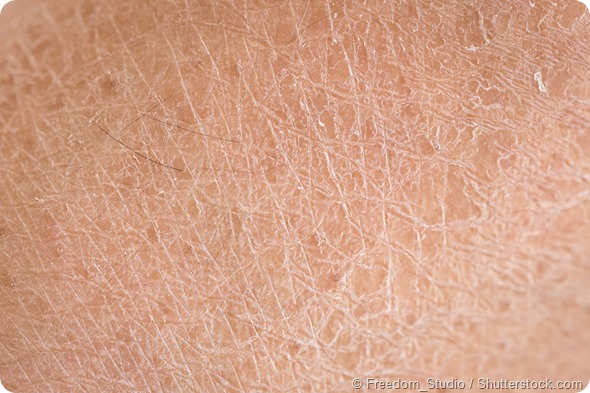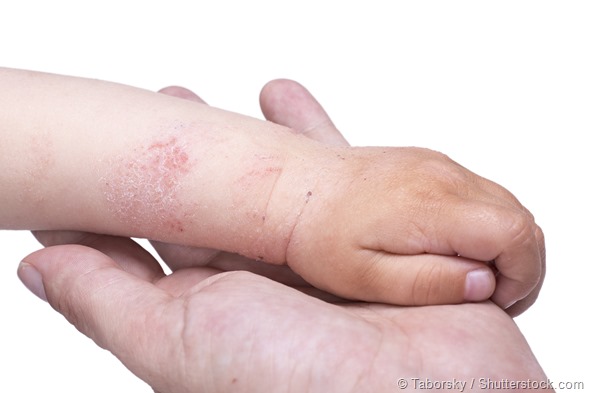Dry skin, also known as xerosis or xeroderma, is very common and can affect any individual, although it is more common in elderly populations. In most cases, it does not pose a serious problem but can sometimes lead to dermatological complications and be difficult to treat.

The skin is the largest organ of the body and is the primary contact point with the external environment. In being so, it is responsible for protecting the internal organs for chemicals, substances, temperature and moisture outside of the body. It acts as a barrier that regulates the loss of fluids and electrolytes from the body and entry from the outside.
Itching, cracking and bleeding
A common effect of excessively dry skin is weakening of the skin, which can lead to cracking or bleeding. This occurs because the skin loses elasticity when it lacks moisture and the skin splits more easily when stretched or put under pressure.
Initially, the skin reddens and develops fine cracks, similar to those that may be observed on fine antique porcelain. These cracks often present along the natural lines of the skin and may cause the skin to feel rough or uneven. The cracks can then become deeper, create rifts in the skin, and some areas may become scaly or begin to flake away.
Eventually, the cracks can extend through the epidermis into the dermal capillaries, which leads to bleeding of the skin. Chapped or cracked lips are also a common result of dry skin.
Infection
When the dry skin cracks, the barrier between the body and the external environment that the skin usually provides is breached. This can allow the entry of bacteria into the body, which has the potential to cause an infection.
Red or inflamed areas on the skin are often early signs of an infection developing. As the infection progress, the area may feel hot and tender to touch. Topical or systemic treatment may be required to manage the infection.
Atopic dermatitis or eczema
Atopic dermatitis, also known as eczema, is a condition that involves redness, inflammation and cracking of the skin. Some people are predisposed to the development of eczema, and excessive dryness of the skin can lead to either the onset of or flare-up of the condition.
In some cases, dry skin can be a warning sign of atopic dermatitis. Additionally, very dry skin can trigger symptoms of eczema and cause the area to become itchy, known as pruritis, also increasing the likelihood of bleeding.

Severity of dry skin
The effects of dry skin will depend on the duration and severity of the condition. Very dry skin that persists for an extended period of time is most likely to cause adverse effects and complications. For this reason, it is helpful for individuals to be aware of their skin and how to take care of it to prevent dry skin. This is particularly important for people as they get older, when dry skin is more common, as these people may need to rely on the frequent use of a skin moisturizer to prevent complications of dry skin.
References
- https://www.aad.org/public/diseases/dry-sweaty-skin/dry-skin#symptoms
- http://www.mayoclinic.org/diseases-conditions/dry-skin/symptoms-causes/dxc-20248892
- http://www.americanskin.org/resource/dryskin.php
- http://www.medscape.com/viewarticle/502433
Further Reading
- All Eczema Content
- What is Eczema?
- Eczema Types
- Eczema Treatment
- Eczema Research
Last Updated: Feb 26, 2019

Written by
Yolanda Smith
Yolanda graduated with a Bachelor of Pharmacy at the University of South Australia and has experience working in both Australia and Italy. She is passionate about how medicine, diet and lifestyle affect our health and enjoys helping people understand this. In her spare time she loves to explore the world and learn about new cultures and languages.
Source: Read Full Article
